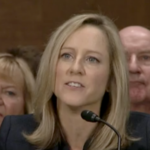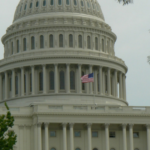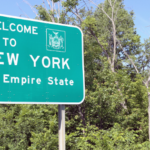EDITOR’S NOTE: The following was written by Hannah Huerta, Marketing Specialist, PDCflow
With the help of a few experts, PDCflow spent the past few months discussing the components of Regulation E that impact the accounts receivable industry. Part one of the series covered why to comply and the potential damages of violating Regulation E. Part two discussed to whom the regulation applies.
Now, in third and final installment of the series, Mike Edmund, attorney at Moss & Barnett, P.A. and Scott Wortman, partner at Blank Rome LLP, address authorization language, types of recurring payments to which Regulation E applies, and share thoughts on the future of industry regulation.
What authorization language must payment documents contain to legally meet Regulation E?
According to the Electronic Fund Transfer Act, “Required disclosures must be clear and readily understandable, in writing, and in a form the consumer may keep. The required disclosures may be provided to the consumer in electronic form, if the consumer affirmatively consents after receiving a notice that complies with the E-Sign Act. (Section 205.4(a)(1)).”
There are numerous disclosures required within the EFTA’s Regulation E. Here is a list of just a few required disclosures:
- The liability of the consumer for unauthorized electronic fund transfers
- Address and phone number, so consumers may contact your to report an unauthorized EFT
- Consumer’s right to stop payments
- Fees that may apply
Wortman explains the ‘safe harbor’ these disclosures create, and when they no longer offer protection. “In its “Official Interpretations” of Regulation E, the CFPB discusses the use of model forms and clauses. It states that “[i]f an institution uses these clauses accurately to reflect its service, the institution is protected from liability for failure to make disclosures in proper form.” So, where some entities get into trouble, is a form over substance argument… or more pointedly, maintaining the appearance of conforming policies, but not actually implementing said policies.”
Are there any payments that would be exempt from Regulation E?
There are a few transfers of funds that are not considered EFTs, says Etmund. “Examples of transfers of funds that are not considered an “electronic funds transfer” subject to Regulation E include, but are not limited to, a transfer of funds originated by check, demand draft, credit card, lines of credit, brokerage accounts and from accounts that were not established for personal, family, or household purposes, i.e. commercial asset accounts.”
Final thoughts on BCFP changes and Regulation E
To close out our series, we asked both Etmund and Wortman their thoughts on the future of Regulation E. The last year has seen many changes toward government regulation. Do they believe the changes at the BCFP or other government bodies are likely to change attitudes toward Regulation E?
Etmund:
“In the short term, I am doubtful we will see further clarification of Regulation E by the CFPB and other regulators, but expect to see additional development of case law regarding Regulation E’s application, which may provide beneficial insight.”
Wortman:
“If there is one truth that became apparent during the heyday of the CFPB under Cordray, it is that attitudes towards its role as a regulator were based on politically motivated anecdotes that were intolerant of contrary views, leading to unconstitutional rulemaking through enforcement of non-existent or ambiguous regulations with impunity. The cost of defending these politically manufactured enforcement actions directly impacted many legitimate businesses, with costs ultimately passed on to the consumers.
So, in direct response to your question, considering the effective date of the prepaid rule (amending Regulations E and Z) has been extended to April 1, 2019, I am hopeful that what appears to be a change in attitude at the CFPB will mean an end to deterring industry members from participating in ongoing deliberations about the role and scope of upcoming rules. And beyond mere hope, we have many reasons to believe that the CFPB’s prior affront to the values underlying our Constitution is coming to an end (at least for now).
As an illustrative example with specific regard to industries under Regulation E, it should be noted that the illegal practices of Operation Choke Point were exposed, and regulators have now rejected the tactics and goals as a prime example of government overreach.
Point being, while nothing is for certain – especially when dealing with the unbreakable bond of power and politics – if industry members stand up with collegiality and mutual respect, and demand a seat at the table, I think we may see a change in attitude towards industry members, which will positively impact the interpretation and scope of Regulation E.”
For a closer look at current EFT authorization requirements, download PDCflow’s EFT Authorization Guide.
Follow PDCflow:








